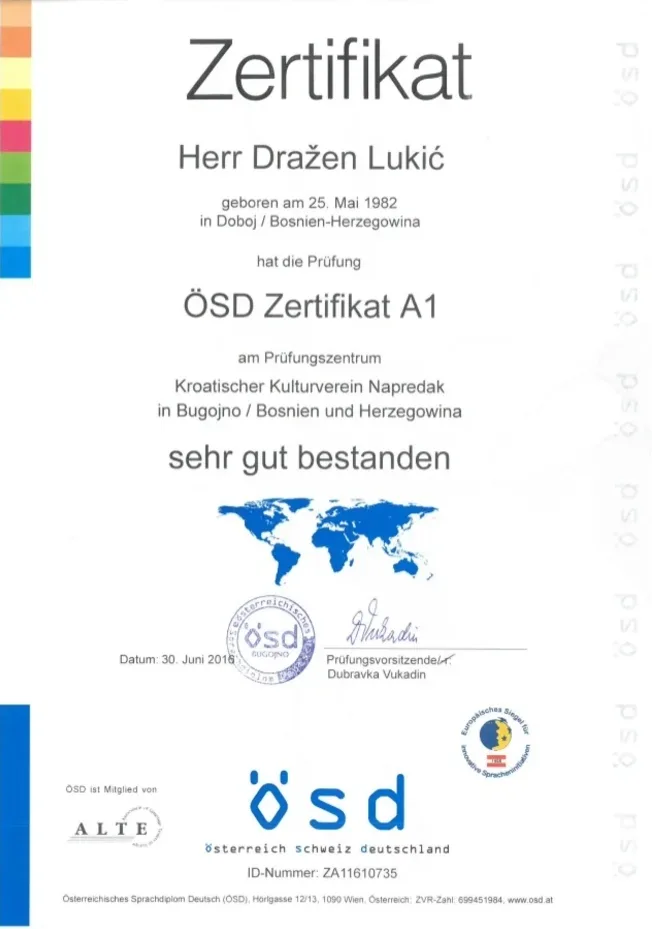Comprehending the German as a Foreign Language Exam
Learning a new language opens doors to countless chances, both personal and professional. Amongst the myriad of languages spoken worldwide, German stick out as a necessary language, specifically in the context of Europe. With over 90 million native speakers and successful economies in Germany, Austria, and Switzerland, efficiency in German can supply substantial advantages. For non-native speakers aiming to validate their German language abilities, the German as a Foreign Language exam works as an essential credential.
Summary of the German as a Foreign Language Exam
The German as a Foreign Language exam, commonly referred to as TestDaF (Test Deutsch als Fremdsprache), is an internationally recognized efficiency test designed for non-native speakers. It examines people' reading, composing, listening, and speaking abilities in German. The assessment is a crucial stepping stone for those seeking to study or operate in German-speaking nations, as it helps in measuring the prospect's capability to use German in academic, professional, and daily contexts.
Who Can Take the Exam?
While anybody can take the TestDaF regardless of age, it is primarily focused on:
Trainees wanting to get universities in Germany or other German-speaking countries.
Experts aiming to enhance their profession potential customers in German-speaking areas.
Immigrants seeking citizenship or permanent residency in Germany, Austria, or Switzerland.
Levels of Proficiency
The TestDaF assesses prospects throughout four crucial components which align with the Common European Framework of Reference for Languages (CEFR). It is segmented into the list below levels:
TDN 3: Intermediate level, appropriate for a lot of university courses.
TDN 4: Upper intermediate level, typically required for scholastic programs that require strong language abilities.
TDN 5: Advanced level, anticipated for highly specialized research studies or expert operate in German-speaking environments.
Exam Structure
The structure of the TestDaF includes four sub-tests, which collectively take approximately 3.5 hours to finish. Here's what candidates can expect:
Listening Comprehension (40 minutes):.

Audio recordings related to daily scenarios and academic scenarios.
Candidates address concerns based on the material.
Checking Out Comprehension (60 minutes):.
Texts from various fields like literature, social sciences, and natural sciences.
Concerns examine understanding of the main idea and comprehensive information.
Written Expression (60 minutes):.
A writing task, frequently including the analysis of a given subject or text.
Prospects must show clearness, coherence, and proper design.
Spoken Expression (30 minutes):.
An interactive speaking test carried out with an inspector.
Prospects are examined on their capability to take part in conversations, give discussions, and respond to questions.
Preparing for the TestDaF.
Preparation for the TestDaF is vital, as it offers prospects the finest opportunity to succeed. Here are some approaches and resources to think about:.
Research Study Various Resources.
Language Courses: Enroll in extensive German language courses customized for TestDaF preparation.
Online Resources: Utilize platforms like Duolingo, Babbel, or Goethe Institute's online offerings.
TestDaF-specific products: Acquire practice tests from the TestDaF official site or language book shops.
Practice Regularly.
Speaking: Engage in conversation clubs or partner with language exchange partners.
Composing: Practice composing essays and letters in German, seeking feedback from native speakers or instructors.
Listening and Reading: Immerse yourself in German media by viewing movies, listening to podcasts, and reading newspapers.
Mock Exams.
Taking mock exams under timed conditions can help familiarize candidates with the test structure and enhance time management skills. Organizations frequently offer practice exams to aid students in examining their readiness.
Value of the Exam.
The significance of the TestDaF extends beyond mere scholastic recognition. Here are numerous reasons that taking this exam is rewarding:.
University Admissions: Many German universities require a specific TestDaF score for admission to programs taught in German.
Career Opportunities: Proficiency across the four language abilities can enhance employability in international companies or organizations in German-speaking areas.
Cultural Engagement: Mastery of the language makes it possible for deeper connections with German culture, literature, and history.
Immigration: Proficiency in German might be essential for residency licenses or long-term residency applications.
Frequently asked questions.
What rating do I require to pass the TestDaF?
There is no universal pass mark; it varies by institution. Typically, a score of TDN 4 agrees with for university admissions.
How frequently can I take the TestDaF?
You can take the TestDaF multiple times. However, sprachzertifikat a2 is perfect to allow sufficient time for improvement in your language skills before reattempting the test.
How long are the results legitimate?
TestDaF results are usually legitimate for 2 years. It is suggested to inspect the particular requirements of the institution or organization you are applying to.
Where can I take the TestDaF?
The assessment is readily available at various screening centers worldwide. The main TestDaF website offers a locator tool for finding neighboring screening centers.
Exists a particular age limit for taking the TestDaF?
There is no age limitation for taking the TestDaF. Whether a teen or an adult, anybody thinking about proving their German language skills can register for the exam.
Conclusion.
The German as a Foreign Language exam is an essential element for anybody aiming to study, work, or immerse themselves in German-speaking societies. With committed preparation and the right resources, prospects can navigate the exam effectively and display their efficiency in the German language, opening various opportunities in education and profession courses. Accepting the obstacle of discovering German not only causes academic or expert improvements but also enriches individual perspectives through the understanding of a brand-new culture.
